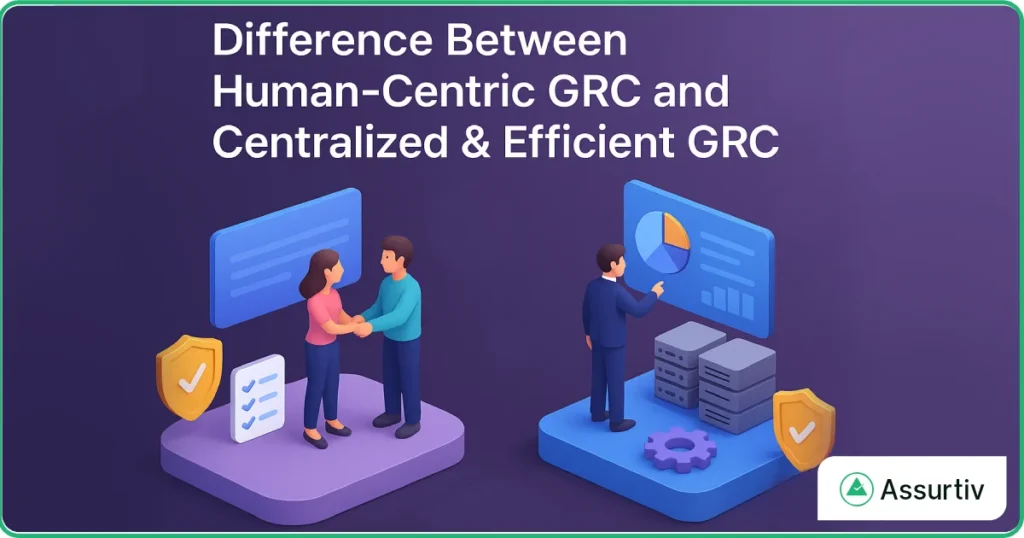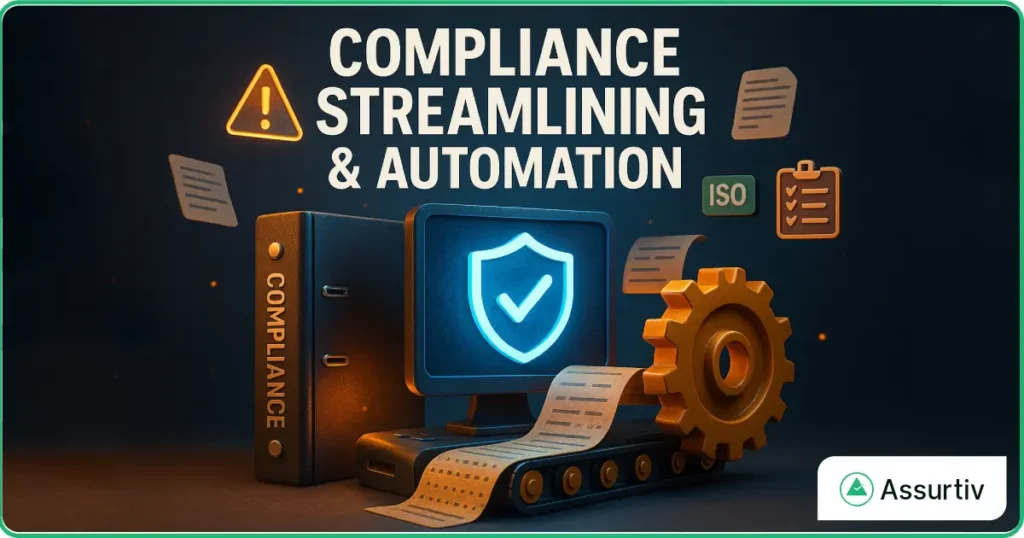Difference Between Human Centric GRC and Centralized and Efficient GRC
By Dhiren | Last Updated: 21 Oct 2025
In today’s rapidly evolving business landscape, organizations face increasing pressure to manage governance, risk, and compliance (GRC) effectively. As digital transformation reshapes the way businesses operate, different approaches to GRC have emerged, each designed to solve unique challenges.
Two widely discussed methodologies are Human Centric GRC and Centralized & Efficient GRC. While they may appear to serve similar goals, they offer different perspectives and benefits.
This article explores the difference between human centric GRC and centralized GRC, helping you understand which approach fits your organization or how to blend both for maximum impact.
What is Human Centric GRC?
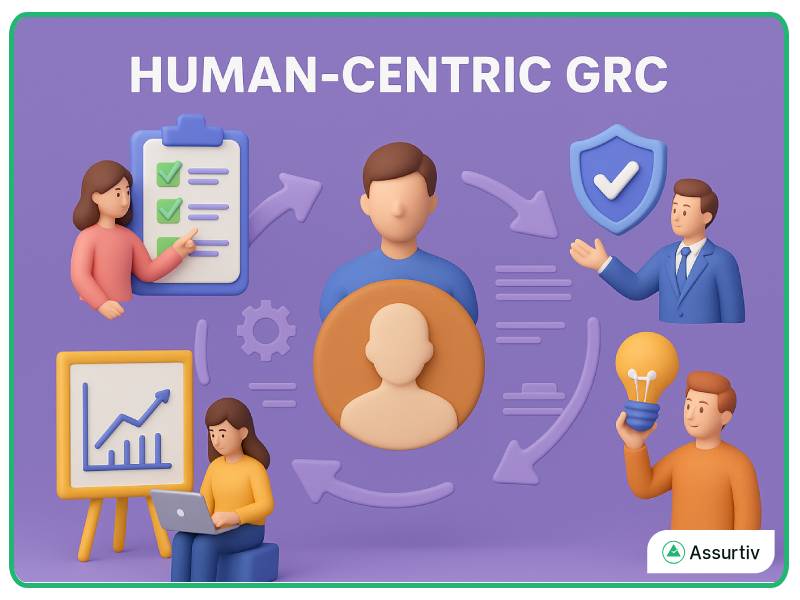
Human-centric GRC is an approach that places people, employees, decision-makers, and stakeholders at the center of governance, risk, and compliance practices. It recognizes that GRC processes are not just about policies, checklists, or technologies, but about behaviour, culture, and human engagement.
Key Characteristics
- Designed for people, not just processes
- Emphasizes user-friendly interfaces and workflows
- Encourages ethical behaviour and accountability
- Prioritizes training, awareness, and decision-making support
- Promotes inclusive risk ownership across departments
Example:
A human-centric GRC platform might notify employees in plain language about a compliance update and explain how it affects their daily work. Instead of bombarding users with legal jargon, it educates and empowers them to act responsibly.
What is Centralized and Efficient GRC?
Centralized and efficient GRC, on the other hand, focuses on unifying and streamlining all GRC-related activities into a single platform or framework. It’s about eliminating silos, automating compliance tasks, and providing leadership with real-time visibility into enterprise risks.
Key Characteristics
- Built for efficiency, control, and scalability
- Centralizes GRC processes across departments
- Uses automation and integration to reduce manual effort
- Supports audit readiness and regulatory compliance
- Enhances data consistency and reporting
Example:
An organization using centralized GRC might have a unified dashboard showing risk metrics, control failures, compliance status, and audit logs- all in one place, updated in real-time.
Difference Between human centric GRC and centralized GRC
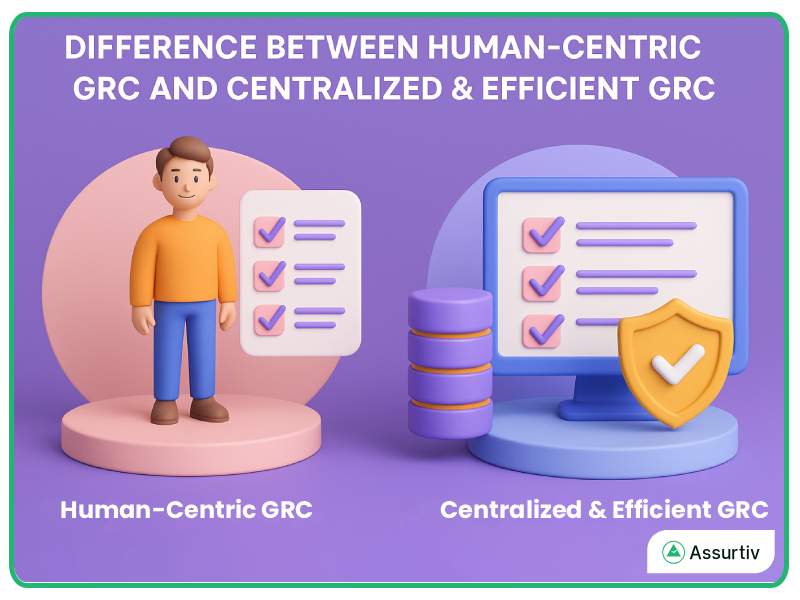 At its core, the difference between human-centric GRC and centralized GRC lies in their focus:
At its core, the difference between human-centric GRC and centralized GRC lies in their focus:
| Aspect | Human-Centric GRC | Centralized & Efficient GRC |
| Primary Focus | People and behaviour | Systems and efficiency |
| Goal | Increase adoption, awareness, ethical decisions | Streamline, automate, and control GRC |
| Interface Design | Simple, accessible, user-first | Technical, data-driven dashboards |
| Risk Ownership | Distributed across all users | Owned by compliance/risk teams |
| Tech Orientation | Human experience and engagement | Integration and process automation |
| Use Case Example | Training employees on ethical decision-making | Automating regulatory reporting and audit trails |
Why the Distinction Matters
Understanding the difference between human-centric GRC and centralized GRC is crucial when designing a modern GRC strategy. Each offers unique benefits but also addresses different organizational challenges.
Human-Centric GRC is best for
- Increasing user adoption of policies and compliance tools
- Reducing human error through education and simplicity
- Building a culture of integrity and shared responsibility
Centralized GRC is best for
- Managing complex, large-scale regulatory environments
- Streamlining enterprise-wide GRC processes
- Providing leadership with high-level oversight and control
Can These Two Approaches Work Together?
Yes, and in fact, they should.
A successful GRC strategy often blends both human-centric and centralized approaches to achieve maximum effectiveness. While centralized GRC ensures process efficiency and risk control, a human-centric layer ensures that employees actively engage with the system, understand its importance, and use it as intended.
Blended Approach Example
- Use a centralized GRC platform to manage policies, track compliance, and automate risk workflows.
- Layer on human-centric UX design, language simplicity, and behavioral nudges to ensure employees engage with the system meaningfully.
Benefits of a Combined GRC Strategy
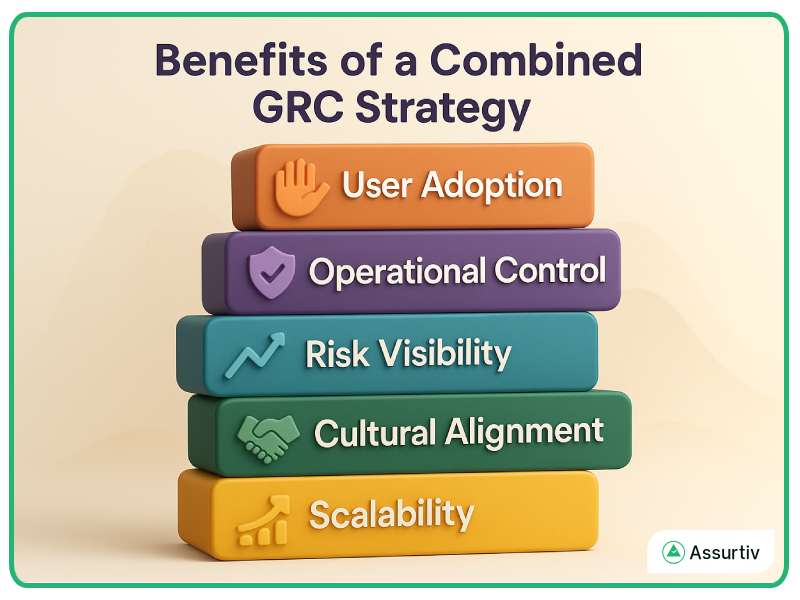
| Benefit | Human-Centric | Centralized & Efficient | Combined |
| User Adoption | High | Low | High |
| Operational Control | Low | High | High |
| Risk Visibility | ️ Limited | Strong | Strong |
| Cultural Alignment | Strong | Limited | Strong |
| Scalability | ️ Moderate | Strong | Strong |
By integrating human-centric design principles into a centralized GRC framework, organizations benefit from both operational efficiency and employee engagement a critical balance in today’s risk environment.
Real Case Example
Lets company ABC, a multinational healthcare provider, adopted a centralized GRC solution to unify compliance and audit tracking. While the system improved oversight, adoption rates were low.
They later introduced human-centric elements:
- Personalized training modules
- Simplified compliance messages
- Role-specific dashboards
As a result:
- Policy acknowledgment rates increased by 35%
- Internal audits completed 20% faster
- Employee-reported risks increased, showing greater awareness
Conclusion
As organizations mature in their GRC journey, understanding the difference between human centric GRC and centralized GRC becomes critical. While centralized systems offer scalability and structure, human-centric design ensures that people remain engaged and aligned with compliance goals.
Rather than choosing one over the other, the best strategy is often a hybrid model, where centralized control meets human engagement, creating a GRC environment that is both effective and sustainable.



